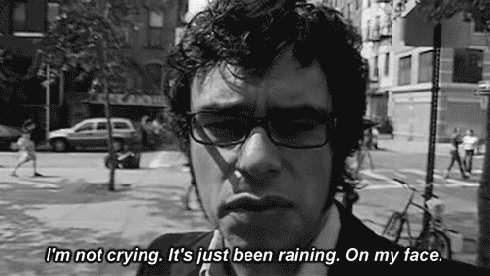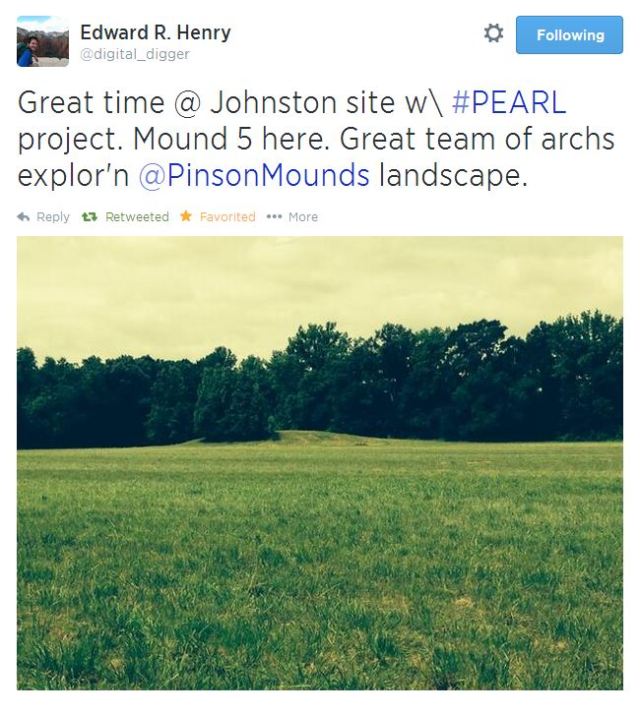A reliable source of blog posts both thought-provoking and entertaining, Tracy C. Brown posed the following question at Archaeology in Tennessee: what are the unwritten rules of professional archaeology? Oh. Man. This could be great fun indeed! In fact, the perhaps tongue-and-cheek unwritten rule mentioned in this post rang so true for me that I laughed aloud: “Professional archaeologists we do not already know and love need to call first and make an appointment because it makes us damned nervous when such colleagues show up suddenly and unannounced.” Preach! Give me a chance to clean up those profiles, and perhaps more importantly, to think of something more cogent to say about the ongoing excavation than “screening clay is the woooorst.”
Doug at Doug’s Archaeology has since offered a few rules of his own, including the disciplinary dedication the the Marshalltown trowel. There might be a few other archaeo-blogs out there adding to the list (if so, please share links in the comments!), and word on the street is that Tracy will be offering up a full compilation of rules next month. Has SEAC Underground anything to contribute? Off the top of my head, and in no particular order:
(1) Stay the hell away from the edge of an excavation unit. Like, a couple of feet away, at least, at all times. Collapsing a profile is even worse than screening clay.
(2) In inclement weather, better the crew gets soaked than the units. When the wind picks up and the sky darkens, grab a tarp, drag it over, tack it down, and make it snappy. AFTER you have secured all of the paperwork and/or electronic equipment safely out of the elements, of course. If you follow this rule, it probably will be raining on your face; you may or may not be crying; but the archaeology will survive.
(3) Fieldschool — gotta have it. A couple of years ago I met an undergrad who was a total rock star in the archaeology classroom. Unfortunately, he was also a student athlete, meaning all of his summers in college were taken up by sports practice; he could never fit in a field school. This proved a major challenge for him looking for a job in archaeology after graduation. At the end of the day, coursework only gets you so far; you need to get experience in the field, and that starts with a fieldshool. And, just as important, there are plenty of folks who might love classroom/lab archaeology but hate the field. Better find out at a fieldschool and be able to adjust your career planning accordingly, before getting a degree in something you aren’t into.
(4 – inspired by and complementing Tracy’s rule, above) If you have the chance, encourage your colleagues to visit the site and pick their brains. Sometimes, multiple/fresh eyes on an excavation are exactly what is needed to get out of a logistical rut or interpretive challenge. This past week, I visited the Berry site in Morganton, NC, where several my colleagues and mentors are currently excavating the remains of one of the earliest Spanish forts in North America. Apparently, they had just been visited by a handful of experts in Southeastern and early colonial archaeology, and the results of their meetings had shed all sorts of new light on the project (not my place to go into here, but I’m guessing it’ll make an appearance at SEAC-Greenville 2014 if you are interested). In a similar vein, earlier this month I was fortunate to join a group of about 10 other Southeastern archaeologists for the first pilot season of work of what promises to be a long-term research project in west Tennessee (again, something for interested peeps to keep their eyes peeled for at SEAC).
This was, hands down, the best week of archaeology that I have ever experienced. Sure, there is always the risk of having too many cooks in the proverbial kitchen, but for my part, I found having so many different skill sets on the site and so many people to think out load with to be a total game changer. My sense is that archaeology, at least research-based archaeology in the American South, has not always been so pro-collaboration, but I think in 2014, “taking advantage of an archaeo-hivemind” is an unwritten rule that could yield stellar results.
Blog co-authors, commentors — what other unwritten rules are there? Pass them along to Tracy at Archaeology in Tennessee, or add some in the comments below!
Postscript — Obviously, things have slowed down on SEAC-U this summer. Between the fieldwork, dissertation defenses, and cross-country moves that several of us have tackled in recent months, the blog has taken an unfortunate backseat. But, we hope this is a temporary slump, and to offer new content in the near future. On that note, we are also thinking of ways to extend the longevity of our largely grad-student-oriented blog now that some of us are, well, no longer graduate students. That’s not to say “we quit!” Rather, if you are a graduate student in Southeastern archaeology (or related fields) and are thinking it might be fun to join our blogging ranks (it is!), give us a shout; we’d love to talk with you! Lacking a blog-wide address, feel free to contact me at wrightap2[at]appstate[dot]edu. Thanks for you patience!

